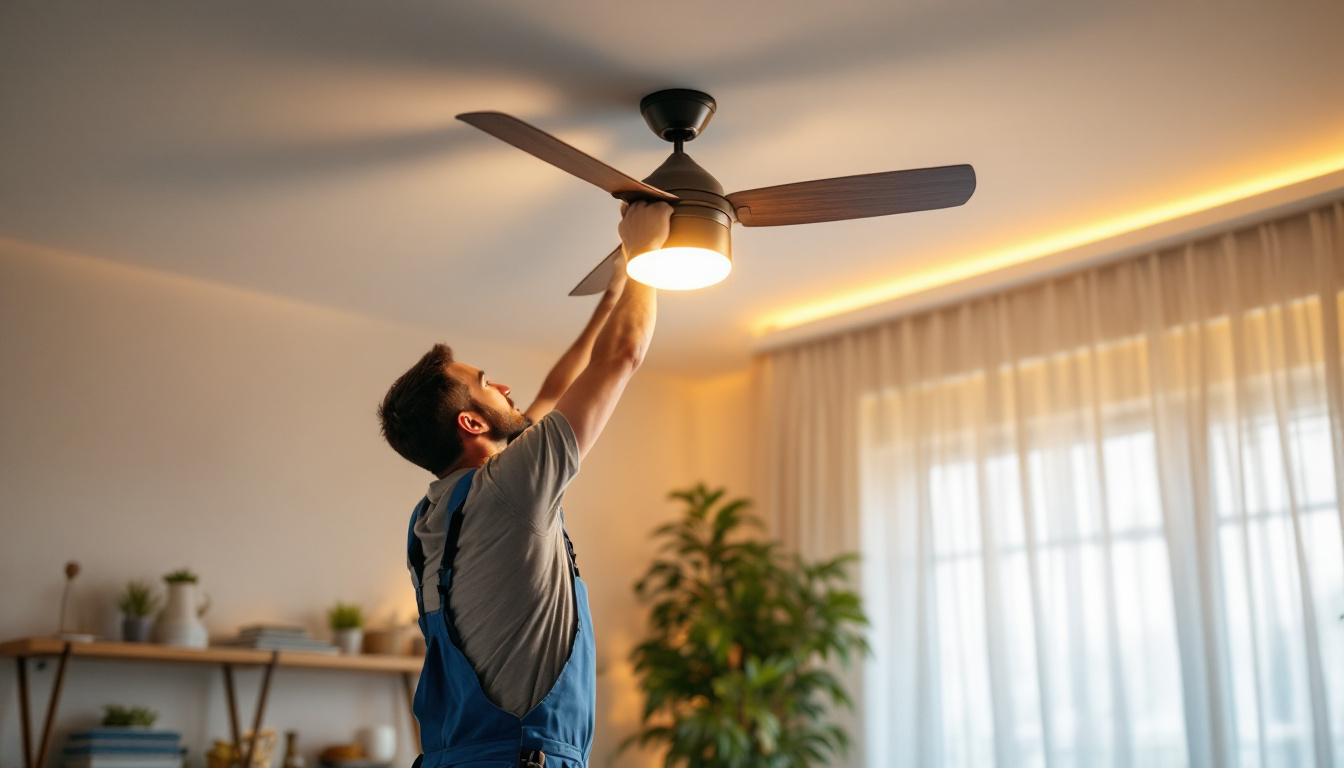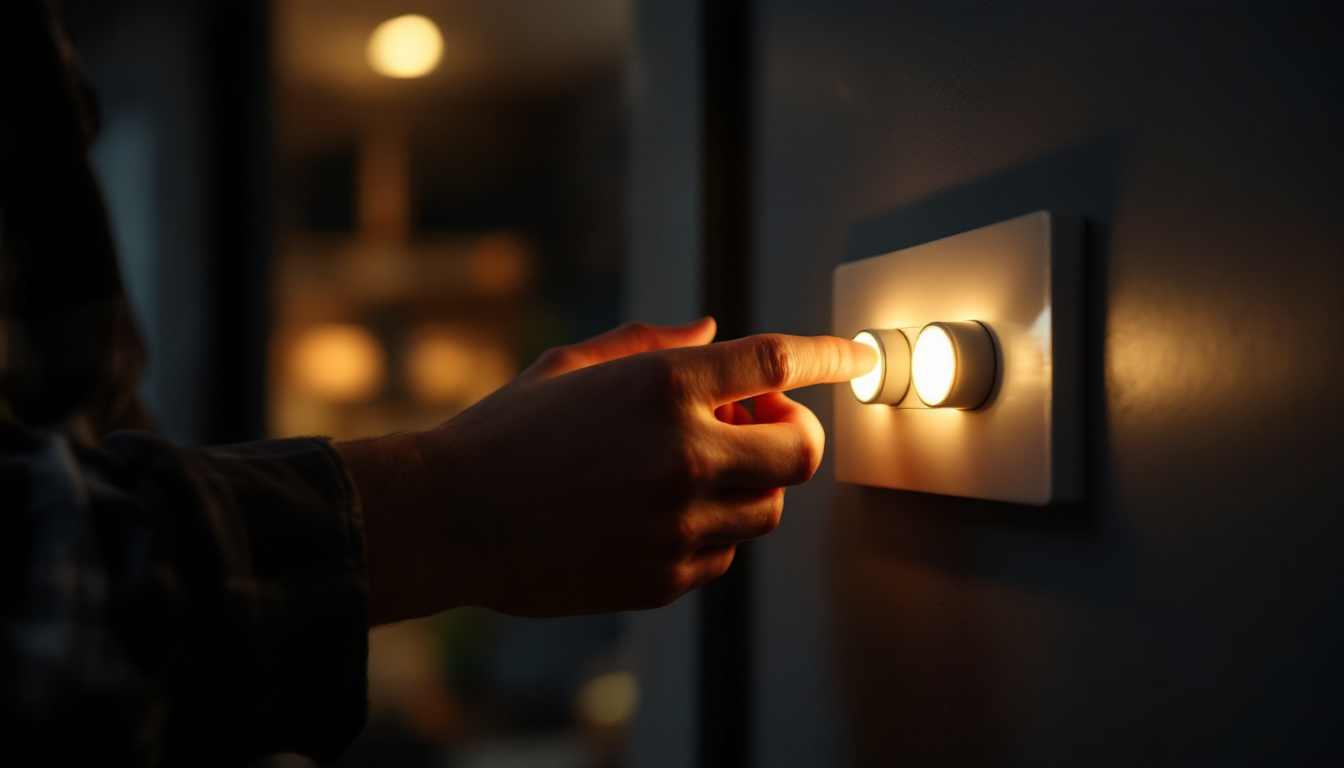
Ceiling fans equipped with lights are a popular choice among homeowners, providing both illumination and air circulation. However, for lighting contractors, installing these fixtures can present a unique set of challenges. Understanding these challenges and implementing effective strategies can help avoid common pitfalls. This article explores how lighting contractors can navigate potential issues associated with ceiling fan lights, ensuring a smooth installation process and satisfied clients.
Before delving into the potential issues that may arise during installation, it is essential to grasp the fundamentals of ceiling fan lights. These fixtures combine the functionality of a fan with the aesthetic appeal of lighting, making them a versatile addition to any room. However, their complexity can lead to complications if not properly understood.
Ceiling fan lights typically consist of several key components: the fan blades, the motor, the light kit, and the pull chains or remote controls. Each of these elements must work in harmony to ensure the unit operates efficiently. Understanding how these components interact is crucial for successful installation.
Moreover, the light kit can vary significantly in design and functionality. Some kits feature multiple bulbs, while others may include integrated LED lighting. Familiarity with the different types of light kits available can help contractors make informed decisions during the installation process. For instance, LED light kits are not only energy-efficient but also have a longer lifespan compared to traditional incandescent bulbs, making them a popular choice for modern ceiling fans. Additionally, the aesthetic options for light kits range from sleek and minimalist designs to ornate fixtures that can serve as a focal point in a room.
Electrical considerations are paramount when installing ceiling fan lights. Contractors must ensure that the electrical supply is adequate to support both the fan and the light kit. This often involves checking the circuit capacity and ensuring that the wiring is suitable for the load.
Additionally, understanding the difference between direct wiring and using a plug-in system can influence the installation approach. Proper grounding and adherence to local electrical codes are also critical to ensure safety and compliance. It’s also worth noting that some ceiling fans come with integrated smart technology, allowing users to control the fan speed and lighting through smartphone apps or voice commands. This added functionality requires careful consideration of the electrical setup, as it may necessitate additional wiring or a compatible smart hub to operate effectively. Furthermore, ensuring that the ceiling fan is installed at the correct height and location can enhance both its performance and the overall ambiance of the space, making it a vital aspect of the installation process.
Despite a solid understanding of ceiling fan lights, contractors may still encounter various challenges during installation. Recognizing these issues in advance can help mitigate risks and streamline the process.
One of the most frequent problems faced during the installation of ceiling fan lights is weight distribution. Ceiling fans can be heavy, and if not installed correctly, they may wobble or become unbalanced. This not only affects the fan’s performance but can also lead to potential safety hazards.
To avoid these issues, contractors should ensure that the mounting bracket is securely attached to a ceiling joist or a suitable support structure. Using a fan-rated box is also advisable, as it is designed to handle the weight and movement of the fan. Additionally, it is wise to check the fan blades for any warping or damage before installation, as these factors can also contribute to balance problems. A well-balanced fan operates more efficiently and quietly, enhancing the overall comfort of the space.
Another common challenge is compatibility between the ceiling fan and the light kit. Not all light kits are designed to work with every fan model, and using incompatible components can lead to functionality issues. Contractors should always verify that the light kit is compatible with the specific fan being installed.
In addition, the electrical connections must match. Some light kits may require specific wiring configurations, and failing to adhere to these requirements can result in malfunction or even damage to the components. It’s also important to consider the wattage limitations of both the fan and the light kit, as exceeding these limits can lead to overheating and potential fire hazards. A thorough understanding of the specifications will ensure a safe and effective installation, allowing the ceiling fan and light kit to work harmoniously together.
As technology advances, many ceiling fans now come with remote control options. While this feature adds convenience, it can also complicate the installation process. Contractors must ensure that the remote control system is correctly wired and that the receiver is properly installed within the fan assembly.
Miswiring can lead to non-functional remotes or interference with other devices. Therefore, it is crucial to follow the manufacturer’s instructions carefully and double-check all connections before finalizing the installation. Furthermore, contractors should be aware of the potential for signal interference from other wireless devices in the home, which can affect the performance of remote-controlled fans. Testing the remote functionality before completing the installation is a good practice to ensure that everything operates smoothly and to the homeowner’s satisfaction.
To avoid the issues mentioned above, lighting contractors can adopt several best practices that enhance the installation process and ensure customer satisfaction.
Effective planning is the cornerstone of a successful installation. Contractors should conduct a thorough assessment of the installation site before beginning work. This includes evaluating the ceiling height, the type of ceiling material, and the existing electrical infrastructure.
Creating a checklist of necessary tools and components can also streamline the process. By preparing in advance, contractors can minimize delays and ensure they have everything needed to complete the job efficiently. Furthermore, taking the time to consult with the client about their specific preferences and needs can lead to a more tailored installation. Understanding the client’s style and the room’s intended use can help in selecting the right type of ceiling fan light, whether it be a sleek modern design or a more traditional fixture, ensuring that the final result aligns with the client’s vision.
Communication with clients is vital throughout the installation process. Contractors should discuss the project scope, timelines, and any potential challenges that may arise. This transparency helps set realistic expectations and fosters trust between the contractor and the client.
Additionally, explaining the benefits of ceiling fan lights and how they operate can enhance the client’s understanding and appreciation of the installation. This can lead to a more positive overall experience and potentially result in referrals for future work. Providing visual aids or examples of similar projects can also help clients visualize the end result, making them feel more involved in the process. Moreover, encouraging clients to ask questions or voice concerns at any stage can create an open dialogue that not only reassures them but also allows contractors to address any uncertainties promptly.
After the installation is complete, a follow-up with the client is essential. This step allows contractors to address any questions or concerns the client may have. It also provides an opportunity to ensure that the ceiling fan light is functioning correctly and that the client is satisfied with the installation.
Offering maintenance tips or scheduling future check-ins can further enhance the client relationship and demonstrate a commitment to quality service. This proactive approach can lead to repeat business and positive word-of-mouth referrals. Additionally, providing clients with a brief tutorial on how to operate their new ceiling fan light can empower them to make the most of their investment. By showing them how to adjust settings or perform basic maintenance, contractors can help ensure that the fixture remains in optimal condition, ultimately leading to greater client satisfaction and loyalty over time.
Safety should always be a top priority during the installation of ceiling fan lights. Contractors must be vigilant about potential hazards and take steps to mitigate risks.
Using the right tools and equipment is crucial for ensuring safety during installation. Contractors should always use insulated tools when working with electrical components and wear appropriate personal protective equipment (PPE) to minimize the risk of injury.
Additionally, ensuring that ladders and scaffolding are stable and secure can prevent falls and accidents. Proper training in the use of tools and equipment is essential for all team members involved in the installation process.
Compliance with local electrical codes is non-negotiable. These codes are designed to ensure safety and functionality in electrical installations. Contractors should stay informed about the latest regulations and ensure that all work meets or exceeds these standards.
Regular training and education on electrical codes can help contractors remain compliant and avoid potential legal issues. This commitment to safety not only protects the contractor but also ensures the safety of the client and their property.
Installing ceiling fan lights can be a rewarding endeavor for lighting contractors, offering clients both functionality and style. However, it is essential to be aware of the potential challenges that may arise during the installation process. By understanding the components, anticipating common issues, and adopting best practices, contractors can ensure a successful installation experience.
Prioritizing safety, clear communication, and thorough planning will not only enhance the quality of the work but also build lasting relationships with clients. Ultimately, a well-executed installation of ceiling fan lights can lead to satisfied customers and a thriving business.
Ready to elevate your lighting installations with the best products on the market? Look no further than LumenWholesale for all your ceiling fan light needs. Our extensive selection of spec-grade lighting products ensures that you can provide your clients with reliable, high-performance lighting solutions. With unbeatable wholesale prices and the convenience of free shipping on bulk orders, you can trust LumenWholesale to supply premium lighting without the hidden fees or compromises. Don’t let inflated markups affect your business—choose quality, affordability, and convenience for your next project. Visit LumenWholesale today and discover the best value in wholesale lighting.

Discover innovative hacks and tips for smart lighting contractors using LED gardening lights.

Discover the key features that distinguish top lighting contractors when it comes to installing outdoor light switch timers.

Discover the essentials of 0 to 10-volt dimmers in this comprehensive guide tailored for lighting contractors.

Discover the advantages and drawbacks of using closeout light fixtures in your projects.